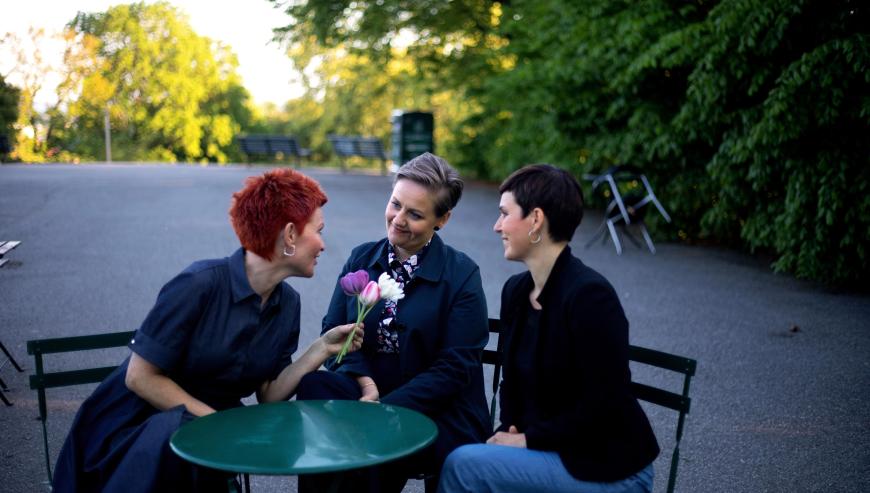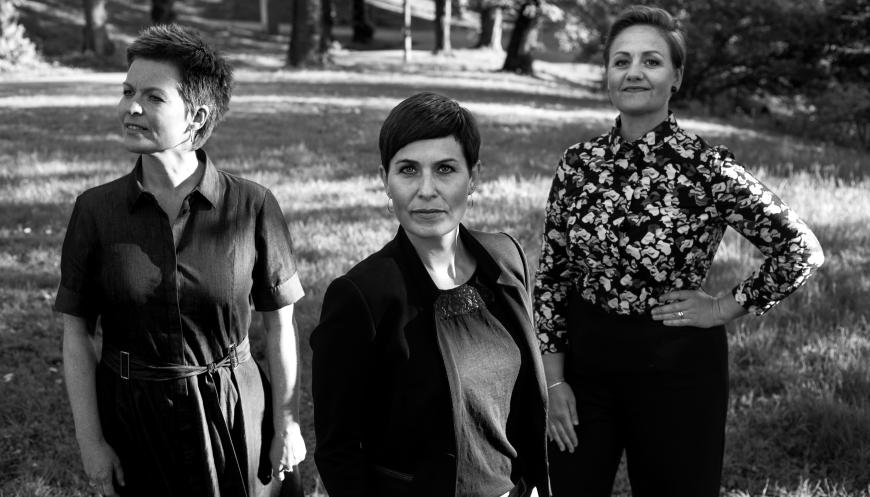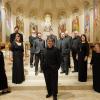
Trio Mediæval is exactly what it sounds like, except when it isn’t, because the three women who make up the group by no means limit themselves to singing medieval music. The trio returned to San Francisco Performances on April 20 for a program called “Lumen de Lumine” (Light from Light) that drew, gloriously, from multiple musical traditions.
The title itself comes from Missa Lumen de Lumine, a Latin Mass composed for the group in 2002 by Sungji Hong. The concert included three movements from that piece, along with three plainchants, traditional hymns in Swedish and Norwegian, and motets ancient and modern.
What every work on the program had in common was the immaculate singing of Anna Maria Friman, Linn Andrea Fuglseth, and Jorunn Lovise Husan. The three sing with astonishing clarity and focus, with little vibrato but rich tone, and always with perfect tuning. They blend seamlessly, yet their voices are distinctive enough that it’s easy to hear individual vocal lines and how they relate.

The overall effect is otherworldly and transporting, the voices seemingly etched into the air. You might wish for more consonants — if you lost your place in the text, you couldn’t always find it again — while at the same time wondering how more consonants would affect the group’s sound.
Each work on the program had highly decorated vocal lines, festooned with turns, passing tones, and melismas, despite the wide chronological range of the music. The style of the modern works reflected those of the older, traditional ones but never sounded anything like them. The Kyrie of Missa Lumen de Lumine followed a Sarum rite Kyrie plainchant; both works included long melismatic passages, while Hong’s also had some spicy dissonances and passages in canon.
The Sanctus from the Mass explored the full range of the singers’ voices, starting rather low and leading to a high climax, making concrete the mentions of the heavens and earth in the text. The closing Agnus Dei reversed this, commencing with loud, high, dissonant passages and descending somewhat.
A plainchant setting of Ubi Caritas preceded Andrew Smith’s 2019 motet on the same text. His composition, gorgeous in its spareness and variety, includes sections with single-voice writing, drones, tight parallel motion for the voices, dissonances, and more.
Several of the motets on the program were from the Old Hall Manuscript, a large and immensely important collection of late 14th- and early 15th-century English sacred music. These motets, by Aleyn, Leonel Power, Thomas Damett, Fonteyns, and John Cooke, feature decorated melodic lines, parallel motion among the voices, frequent open intervals, and very occasionally, dissonances.
Seven traditional hymns rounded out the program. These were all in Swedish or Norwegian, but they weren’t all from Sweden and Norway. Two originated in Estonia, which had a Swedish-speaking minority into the 20th century. These luminous hymns, mostly arranged by current and former members of Trio Mediæval, have folk elements, but the sophisticated arrangements fit perfectly with the program, musically and spiritually.
The performance was almost entirely a cappella; for one hymn, sung solo by Husan, Friman and Fuglseth played small percussion instruments. Schulmerich MelodyChimes in different pitches provided a stable drone for several items on the program.
The sole encore was a folk-song arrangement, with Friman playing a Hardanger fiddle. And it was clear that everyone at St. Mark’s would have happily listened to another hour of Trio Mediæval — or the whole program sung all over again.



